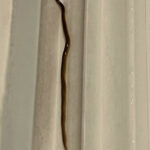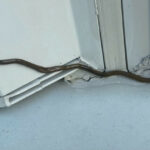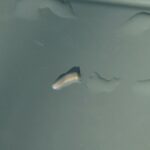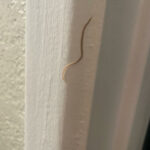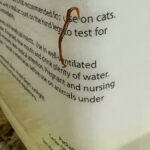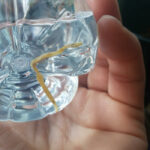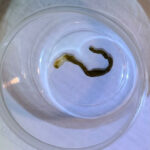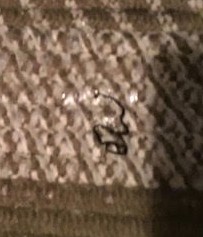
“I found a dead, black hammerhead worm in a shiny, clear substance in my garage. Does this worm secrete this substance?” asks this reader in her query. The photo she sent us displays a long, thin worm lying in a pool of the aforementioned shiny substance.
To start off with, we want to give props to our reader for identifying the creature she found in her garage. For those of our readers who are not aware, hammerhead worms are a subcategory of flatworms which contains many species. They are predatory worms, and will eat various insects, earthworms, mollusks and other hammerhead worms which they can trace using biological signatures left behind in the air. One of the ways in which hammerhead worms kill their prey is by secreting toxic substances onto the target; we think this is what our reader found. So, to answer her question, hammerhead worms do indeed secrete a substance such as the one our reader found, and she would do best to not touch it, as it could cause an allergic reaction.
Now, an allergic reaction (causing potential itching or rash) is the worst that this substance will do to a human being. It most definitely will not cause permanent damage or death; that is reserved for the smaller critters who the hammerhead worm wants to eat. There are two substances that hammerhead worms secrete, one that immobilizes their prey, and one that dissolves them. Of the two, we are not sure which one our reader found, but in either case we still advise caution and recommend not coming into direct contact with it. The hammerhead was likely found in the garage because it was chasing an earthworm or some other target. Alternatively, it could be that this hammerhead worm killed another hammerhead and ate it, and it is lying in a pool of the dead hammerhead’s paralyzing secretions. If that is the case, then the hammerhead our reader found might not even be dead. If this is not the case, then its death is a mystery, especially since hammerhead worms are notoriously difficult to kill. Like most flatworms, if one cuts a flatworm in half, those halves grow into two new worms. If one cuts it into thirds, those thirds will grow into three worms. One can most effectively kill a hammerhead worm using salt, vinegar or soapy water. For that reason, we advise even more caution to our reader, as the hammerhead worm might not even be dead.
In conclusion, the substance found in our reader’s garage was most definitely secreted by the black hammerhead worm around which it was found. We hope that this article proves insightful to our reader, and that we answered her question sufficiently.
All About Worms is always free, always reader-supported. Your tips via CashApp, Venmo, or Paypal are appreciated! Receipts will come from ISIPP Publishing.
You might also find these guys interesting!




